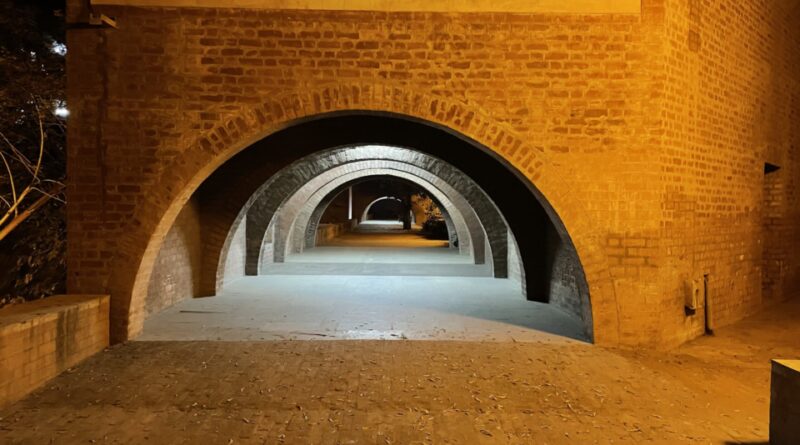Together For IIMA, a group of alumni of IIM, Ahmedabad
BILKULONLINE
Ahmedabad, April 16: Against the backdrop of a new Director Bharat Bhaskar and new Chairperson of the Governing Council Pankaj Patel taking over their respective roles at IIM Ahmedabad, ICOMOS India and partners organised an international webinar featuring top conservation architects, historians, technical specialists and alumni who gave expert views and offered support to conserve the architectural legacy of IIMA.
In November 2022, IIMA’s Governing Council had announced the decision to demolish virtually all the buildings in its heritage campus citing structural safety concerns and business needs. External facing buildings would be rebuilt largely as they were and inner dormitories would be redesigned along contemporary lines, expanding the number of rooms and overall built capacity. Annabel Lopex, Head ICOMOS India mentioned the worldwide alerts that were issued in wake of these announcements in 2020 and 2022 and repeated the call for a conservation plan.
Architects and conservation specialists stressed the unique place that IIMA’s heritage structures holds in the sphere of modern architecture and advocated greater transparency and engagement from the decision makers at IIMA. Offers of monetary and technical support were made by representatives of top institutions.
Architect Prem Chandavarkar mentioned that “degradation of structural masonry parts have to be tackled” but the aim should be to look for ways to imbue the inhabitation of what needs to be acknowledged as a public asset. He mentioned the need for a “heritage audit” that documents the “tangible and intangible heritage”, which becomes the “lodestar” guiding all consequent selections and actions. Public property require public processes with widest potential disclosure which has been lacking to this point at IIMA.
Amit Srivastava, Director (India) for Centre of Asian and Middle Eastern Architecture, University of Adelaide, explained the intangible heritage of IIMA, and how the decision to use brick influenced the building and design culture of not just Ahmedabad but around the world. Referring to the involvement of Gujarati industrialists and politicians, NID, the supervisors, brick layers and masons, he said “IIMA is not just the creation of Louis Kahn sitting in Ahmedabad but a creation of Ahmedabad directed in some sense by Louis Kahn”.
Meenakshi Nath, an alumni of IIMA highlighted the differential approach being adopted by IIMA to external facing structures as opposed to the inner dormitories and suggested that “much as we love the iconic Louis Kahn Plaza, it’s the dorms that connect us to each other and back to the campus”. She questioned whether it’s structural safety or the factors of location and growth which are guiding decisions. Rashmi Bansal, alumni, shared the experience of generations of alumni who had felt the built space spoke to you, recalled walking through those arches and feeling I am part of something so much bigger. She captured the views of recent students who felt the awe and inspiration of the heritage campus should not be sacrificed for the sake of conveniences like toilets but basic comforts such as ACs are needed. 
(Photo credit: Meenakshi Nath)
Mallika Sarabhai reminisced about how she grew up seeing her father Dr Vikram Sarabhai discussing plans with architect Louis Kahn, rued that while there was community engagement when these buildings were being constructed the same is not evident at this stage when demolition decisions are being made.
Arun Menon, Professor of Structural Engineering at Indian Institute of Technology, Madras, who has studied the IIMA structures, elaborated the challenge of porosity of the bricks but stressed that the buildings already adhere to seismic requirements of the region. He questioned whether replication is feasible today.
Jigna Desai, Aishwarya Tipnis, elaborated on how structural challenges were dealt with in similar buildings in CEPT and The Doon School. Tipnis said “If there is love for a building and there is correct advice a lot of things can happen. There was no mandate from law that was protecting this building other than the love of the community for its own heritage.” Ciro Caraballo and Wessel de Jonge showcased examples of how far more severely degraded structures than IIMA’s heritage buildings had been resurrected through a combination of restoration and rebuilding.
Arun Menon and Wessel de Jonge brought up the issue of climate change. Jonge mentioned, “It’s not correct to tear down buildings and construct new buildings… Now we have CO2 emissions… It’s merely irresponsible to suppose like that… There may be a whole lot of experience within the Netherlands about brick and glueing bricks… so if there’s something we are able to do, that’s additionally an choice.”
American architect Susan Macdonald, Getty Conservation Institute mentioned “We had offered IIMA to organise an extremely knowledgeable assembly to look at the technical challenges…even now we are ready to work with IIMA to carry collectively the world’s greatest technical minds, together with India’s greatest, to tackle the extremely complicated technical challenges.”
The session closed by several of the attendees committing to collaborate to do what they can to save the architectural legacy of IIMA, supporting in whatever ways possible. ICOMOS and partners have committed to developing an institutional structure to preserve modern masterpieces, and to convene a meeting of all stakeholders IIMA, its alumni, professionals, contractors etc.
The webinar “Future for the Fashionable Previous: Heritage-led Improvement for IIM Ahmedabad” was organised by the Nationwide Scientific Committee of 20 C (NSC-20C), ICOMOS India with partnering institute Kamla Raheja Vidyanidhi Institute for Structure & Environmental Research (KRVIA), Mumbai, in collaboration with the Rising Professionals Working Group (EPWG), ICOMOS India.




